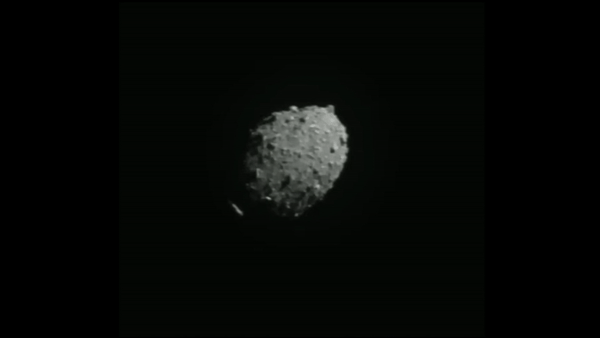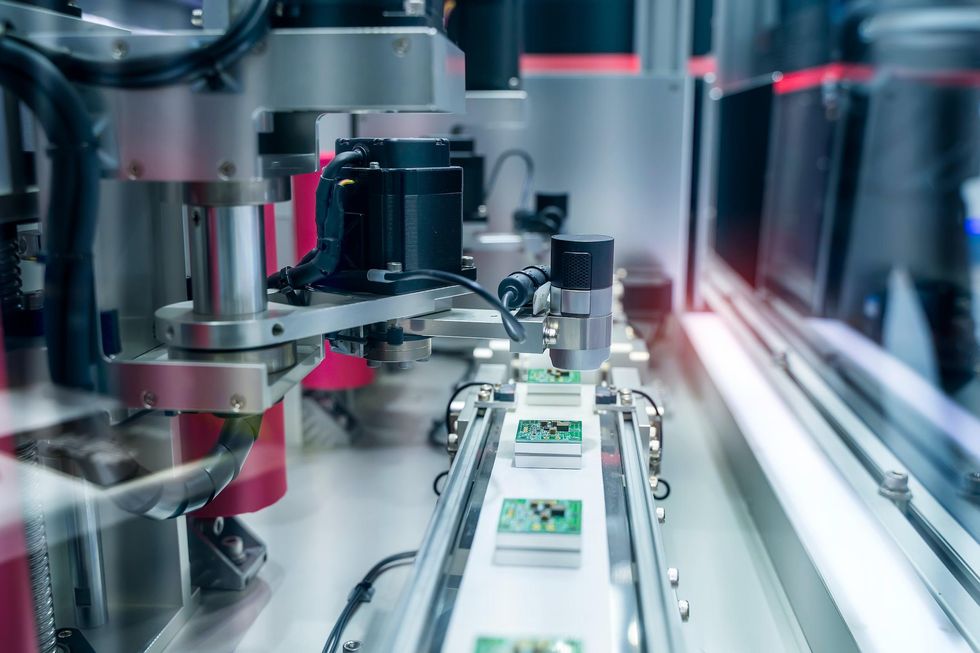
NASA’s DART spacecraft is no more, but its final view is stunning.
The Double Asteroid Redirection Test (DART) mission was designed to test a kinetic impact, a technique that humans might use to adjust a threatening asteroid’s orbit and keep Earth out of harm’s way. Kinetic impact is just a more scientific way to describe slamming something heavy and fast-moving into an asteroid. So that’s precisely what the DART spacecraft did tonight (Sept. 26) at 7:14 p.m. EDT (2314 GMT), crashing into a small asteroid called Dimorphos. And the result is a truly spectacular series of images.
“They exceeded my expectations,” Nancy Chabot, DART mission coordination lead and a planetary scientist at the Johns Hopkins University Applied Physics Laboratory, said during NASA’s broadcast of the event this evening.
Related: NASA’s DART asteroid-impact mission explained in pictures
Until DART’s fleeting visit, scientists knew very little about Dimorphos, which orbits a larger asteroid called Didymos; the system appears as just a point of light to telescopes on Earth. But the spacecraft captured images all the way in, sending home one image every second, with our final view of the asteroid taken about two and a half seconds before the crash, according to a timeline NASA provided before impact.
The footage is precious, since scientists have seen very few asteroids up close. As DART’s final images came down to Earth, mission team members — and everyone who tuned in to the livestream — saw an incredible field of angular gray rocks interspersed with pebbles, gravel and dust.
“I know other scientists like me on the team are already pointing at those images being like, ‘Did you see that boulder? Did you see that smooth area?'” Chabot said.

The images closely resemble photographs taken by Japan’s Hayabusa2 mission at the asteroid Ryugu and NASA’s OSIRIS-REx mission at the asteroid Bennu. Both of those space rocks were so-called “rubble-pile” asteroids, named for the spread of rocks seen on their surfaces. However, whereas both of those asteroids were diamond-shaped, Dimorphos appears as more of a “space potato” in images DART captured while approaching.
DART was equipped with a single instrument, the Didymos Reconnaissance and Asteroid Camera for Optical Navigation, or DRACO. Before snapping the incredible final stream, DRACO was also responsible for helping steer the spacecraft into Dimorphos — an impressive feat given that DRACO could only spot the moonlet at all about an hour and a half before impact.
Over the coming days, scientists will be receiving more images of Dimorphos, ones snapped by the Light Italian Cubesat for Imaging Asteroids (LICIACube), a tiny spacecraft that rode along with DART until earlier this month. LICIACube flew past the impact site just three minutes after the collision, photographing the cloud of debris that DART’s abrupt arrival flung into space. However, the cubesat also turned its two cameras to the unscarred side of Dimorphos, giving scientists additional data about the space rock.
And scientists have another opportunity to see Dimorphos in detail, this time for much longer. The European Space Agency will launch Hera, a follow-up mission, in 2024. Hera will arrive in 2026 and, unlike DART, will stay in the neighborhood, exploring both Dimorphos and Didymos. The mission will give scientists a better look at the impact crater itself after the dust has settled, as well as at the asteroids’ natural states.
Email Meghan Bartels at mbartels@space.com or follow her on Twitter @meghanbartels (opens in new tab). Follow us on Twitter @Spacedotcom (opens in new tab) and on Facebook (opens in new tab).
Join our Space Forums to keep talking space on the latest missions, night sky and more! And if you have a news tip, correction or comment, let us know at: community@space.com.
Note: This article have been indexed to our site. We do not claim legitimacy, ownership or copyright of any of the content above. To see the article at original source Click Here













